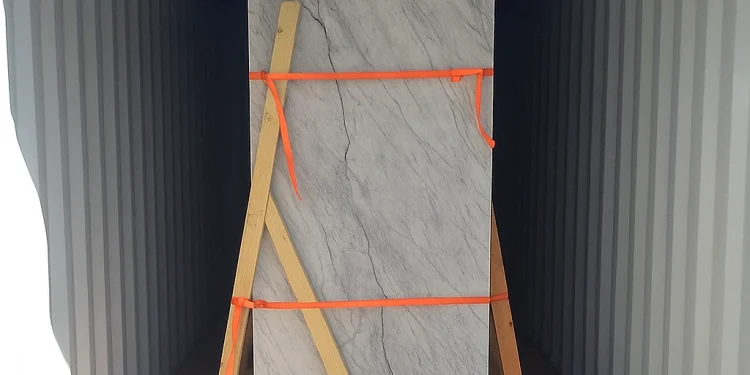Marble slab delivery typically involves wooden packing or wooden crates. However, additional protection is necessary to ensure the slabs remain safe and avoid the risk of breaking when shipped in large quantities, and this can be achieved by using an open top container.
An open top container features a roofless design that allows easier loading and unloading. This type of cargo container is specifically built for transporting over height cargo, such as industrial machinery, prefabricated building components, steel columns, and turbine blades.
With an open top container, the loading and unloading process of marble slabs can be assisted with a crane. The cargo will be lifted in and out from the top. This is different from using general cargo containers, where loading may not be as convenient and can only be carried out with a forklift or hand pallet.
By nature, marble is prone to breaking because it is relatively soft. It is also porous and sensitive to temperature changes and impact. Unstable humidity and temperature can reduce the stone’s durability, causing cracks and even breakage.
Marble is a popular architectural material due to its visual appeal. This metamorphic stone is available in various natural patterns and colors, and it also helps keep indoor temperatures cool. Marble slabs generally measure 2.4 to 3 meters in length, 1.22 to 1.83 meters in width, and 2 to 3 centimeters in thickness.
These slab dimensions can serve as a reference when selecting an open top container. Open top containers are available in 20ft and 40ft sizes. The difference lies in their length. A 20ft open top is 6.058 meters long, while a 40ft open top measures 12.192 meters. Both sizes share the same width of 8 feet or 2.438 meters. In terms of height, they come in standard height (8 feet 6 inches or 2.591 meters) and high cube (9 feet 6 inches or 2.896 meters).
With a combination of sturdy wooden packing and an open top container, marble slab delivery can be carried out safely and efficiently, whether by land or sea.
If you need an open top container for your project or for marble slab delivery in your business, Tradecorp is ready to help. Since 2014, Tradecorp has supported operational needs for businesses and field projects by providing shipping containers, offshore DNV containers, ISO tank containers, modified containers, modular prefabricated buildings, and RapidFrame construction. To place an order, fill out the online form available on the website. Our team will contact you afterward.
If you still need more information about open top containers for marble slab delivery, explore the details in the following review!
Daftar isi
Open Top Container for Marble Slab Delivery
20ft Open Top Container
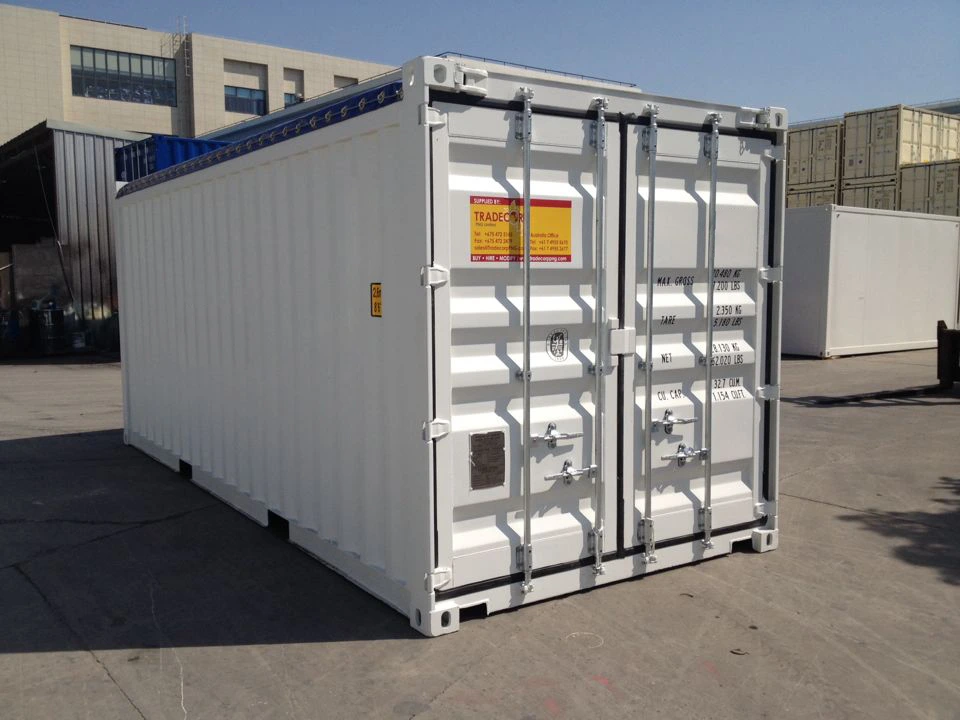
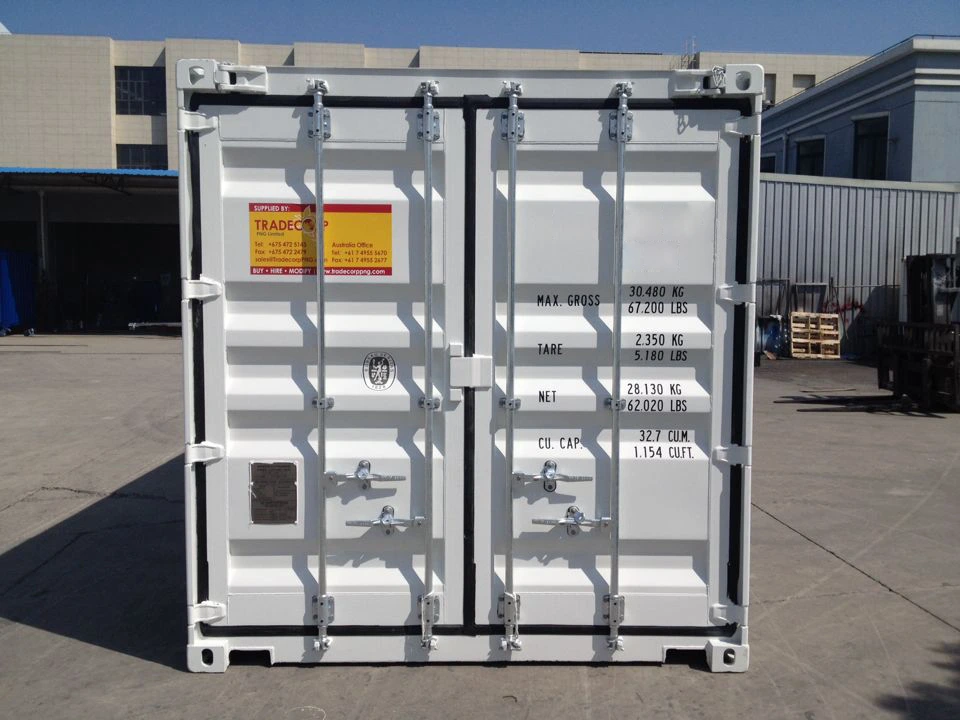
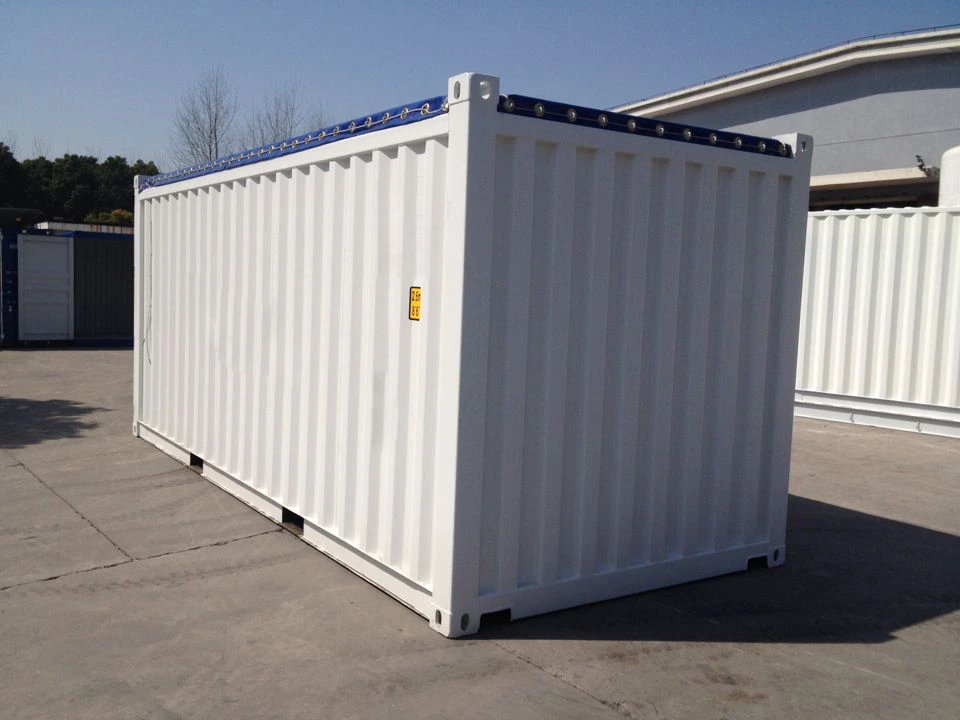
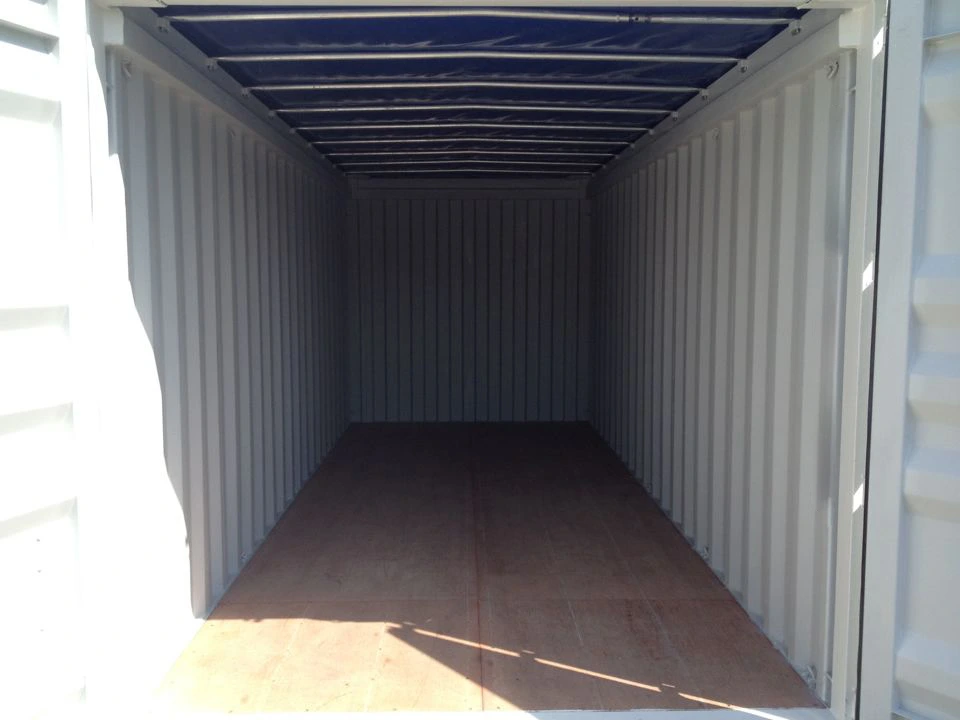
40ft Open Top Container
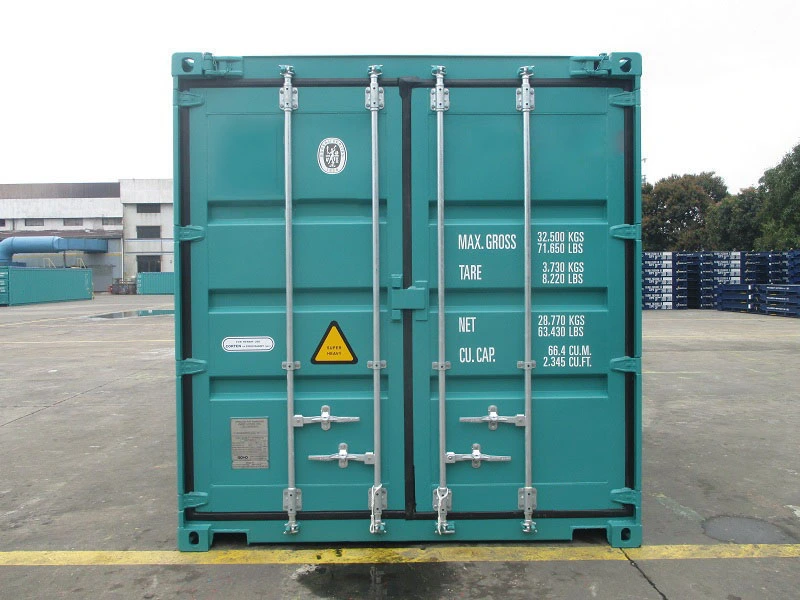
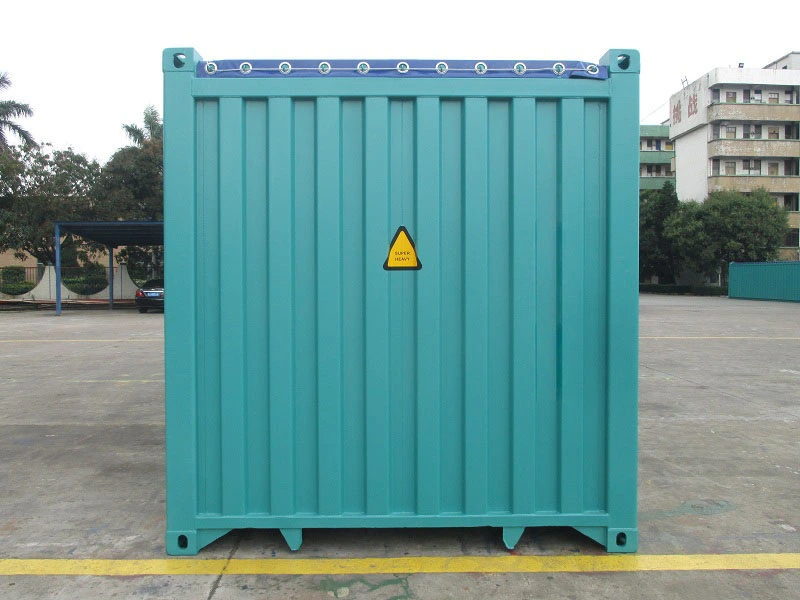
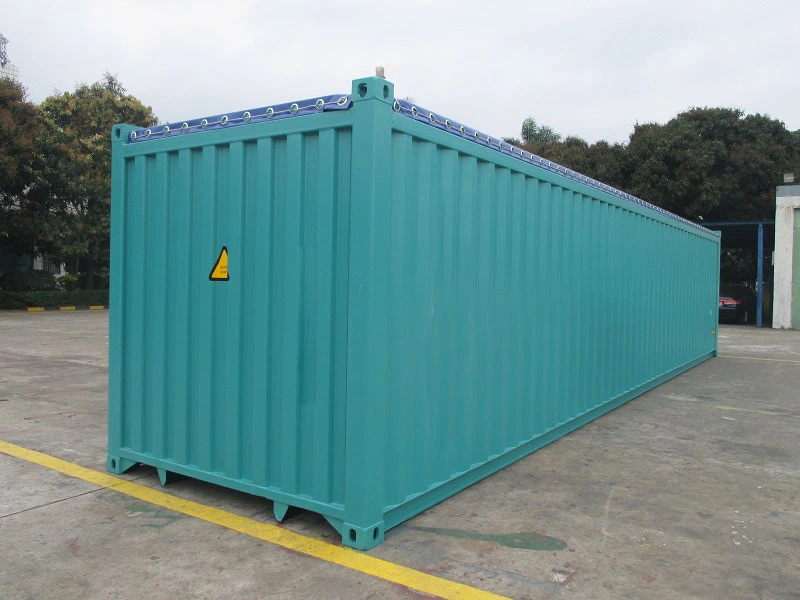
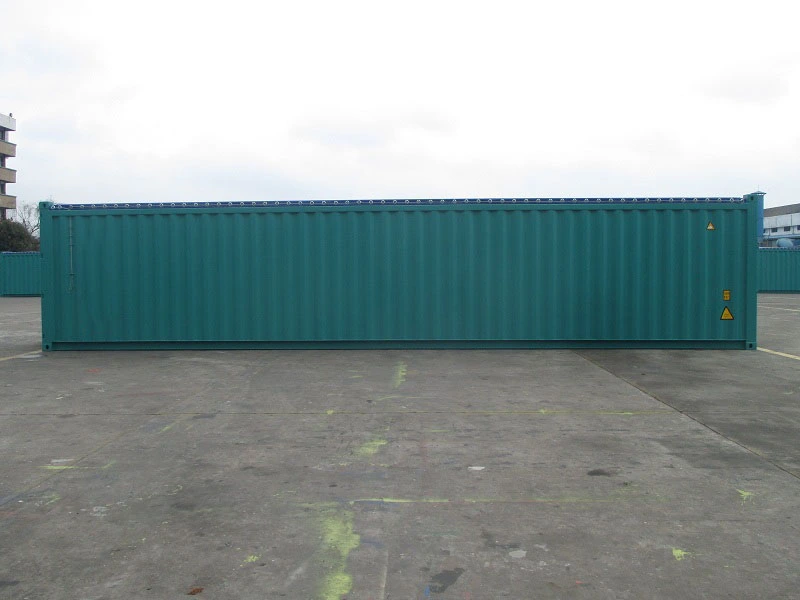
Open Top Container Sizes and Specifications
20ft Open Top Container
|
Specification |
Detail |
| Length x Width x Height (Meters) | 6.058 x 2.438 x 2.591 meters |
| Max Gross Weight | 30,480 kg |
| Net | 28,130 kg |
| Tare | 2,350 kg |
| Cu. Cap. | 32.7 cubic meters |
40ft Open Top Container
|
Specification |
Detail |
| Dimensions | 12.192 x 2.438 x 2.591 meters |
| Maximum Gross Weight (M.G.W) | 32,500 kg |
| Maximum Payload (Net) | 28,770 kg |
| Tare | 3,730 kg |
| Cu. Cap. | 66.4 cubic meters |
Advantages of Using an Open Top Container
Compared to general cargo containers, open top containers offer several advantages that make them an excellent choice for transporting large and heavy cargo. Here are the key benefits:
1. More Practical Loading and Unloading Process
With an open top design, cargo can be lifted directly from above using a crane. This structure makes it easier to handle oversized, tall, or irregularly shaped items that cannot be loaded through the container’s end doors.
2. Ideal for Industrial and Construction Cargo
Open top containers are well suited for transporting heavy machinery, large industrial components, steel frames, and construction materials such as beams, marble, granite, and steel pipes. The wide vertical access helps operators arrange the load without tilting or unpacking the items.
3. More Flexible Access
In addition to the open top, these containers often include a front door that allows horizontal access. This combination accelerates the loading and unloading process and improves workflow efficiency on site.
4. Optimized Loading Capacity
The removable roof allows full use of the container’s internal height. This means tall cargo can be loaded without compromising stability or safety during the shipment, which is particularly important for marble slab delivery.
5. Versatile for Many Industrial Sectors
Thanks to their flexibility, open top containers are widely used across construction, manufacturing, agriculture, and maritime logistics. A single unit can support multiple operational needs without requiring extensive modifications.
6. Can Be Protected with Additional Covers
Although the top is open, the container can still be secured with a hard top or soft top cover after loading is completed. This protection shields the cargo from rain, dust, and extreme weather conditions throughout transit.
How to Transport Marble Slabs
Transporting marble slabs requires special handling to prevent cracking, chipping, or scratching during transit. Below are several essential steps to ensure the marble slab delivery process runs safely and efficiently.
1. Keep the Slabs in an Upright Position
Marble slabs should always be placed vertically rather than laid flat. This position helps distribute the weight evenly and reduces surface pressure that could cause cracks.
2. Use an A-Frame for Support
Secure the slabs onto a strong and stable A-frame mounted on a flatbed truck. The A-frame keeps the marble upright and prevents shifting during transit. Ensure the frame is firmly installed and does not wobble.
3. Secure the Slabs with Moving Straps
Use high-strength moving straps to hold the marble slabs in place. The straps should not be too tight to the point of stressing the stone surface, but strong enough to keep the slabs from moving while being transported.
4. Use Carrying Clamps for Lifting
When lifting or relocating the slabs, use carrying clamps to grip them safely without dragging or pushing. Avoid pulling or pressing on the edges, as this can cause cracks or chips.
5. Add Protective Padding
Cover the marble surfaces with bubble wrap, foam padding, or soft cloth to prevent scratches, minor chips, and impact between slabs. This extra protection is especially important for marble with a polished finish.
6. Use Cranes or Forklifts for Loading and Unloading
For loading and unloading, use cranes or forklifts to lift the slabs safely without risk of dropping or hitting hard surfaces. Avoid sudden or forceful lowering, as vibrations can lead to internal cracks.
7. Control Speed and Minimize Excessive Vibration
During transport, the driver should avoid sudden braking, sharp turns, and bumpy routes. Excessive movement or impact can disrupt the slab’s stability and increase the risk of damage.
8. Use Auxiliary Equipment for Short-Distance Handling
For moving slabs over short distances, use dollies or specialized trolleys capable of supporting heavy loads. This makes movement around project sites or warehouses safer and more efficient.
9. Prioritize Workplace Safety
Ensure all team members wear appropriate personal protective equipment such as gloves, safety shoes, and helmets. Clear communication between workers is also important to prevent handling mistakes.
10. Consider Hiring Professional Services
If you lack the equipment or experienced personnel, it is advisable to hire professional services specializing in marble slab delivery. Their expertise and proper equipment help reduce the risk of damage significantly.


